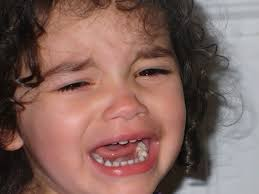The arrival of your toddler’s molars can be a painful experience for the both of you. Due to their larger size and double edges, molars can be twice as difficult to cut through the gums as baby incisors. The first molars typically start breaking through the gums early in their second year and will continue until they are 33 months old. Teething ages can vary, but they should have all 20 baby teeth by the age of 3.
To help you prepare for toddler teething, the experts at Dogwood Pediatric Dentistry share the teething symptoms you can expect and some tips to relieve the discomfort.
share the teething symptoms you can expect and some tips to relieve the discomfort.
Toddler Teething Symptoms
Your toddler may be lucky and cut their molars with little or no pain. But for many toddlers, cutting molars can be quite painful. While the symptoms will be similar to when they were cutting their teeth in infancy, they can be magnified when it comes to cutting molars. Here are the most common symptoms:
- Crankiness: It’s highly likely that your toddler will be cranky as cutting molars can cause swollen and sensitive gums.
- Ear pulling and cheek rubbing: Your toddler’s gums, ears, and cheeks share the same nerve paths, so they will likely feel the pain in their ears and cheeks.
- Chewing: If you notice your child chewing on things, it’s because they are trying to relieve the pressure on their gums.
- Drooling: Excessive drooling is a sign that the teeth are ready to come in.
- Disrupted sleep: This is where it becomes painful for both of you. Toddlers often awake at night from the pain and have a hard time settling back down.
- Not wanting to eat: Even the best eaters may not have an appetite for a few days as the teeth cut through the gums.
Tips for Relief
To help your child through toddler teething, try these tips:
- Cold foods: Chilled yogurt or applesauce can help relieve the pain from swollen gums.
- Teething rings: These are cold rings that your child can chew on, or you can also give them a cold washcloth to chew on.
- Massage the gums: Dip your fingers in cold water and then gently massage your child’s gums right before they eat.
- Medication: If your toddler is really uncomfortable, talk to your pediatric dentist or pediatrician about giving your child acetaminophen or ibuprofen to relieve the pain.
- One note of caution: Children should not be given any topical teething gels or liquids that contain benzocaine, which is a type of anesthetic found in many over-the-counter teething gels. The Food and Drug Administration warns that benzocaine can cause a rare-but-deadly condition called methemoglobinemia, which reduces the oxygen in the bloodstream to dangerously low levels.
Visit Your Statesboro and Savannah Kids Dentist Today!
You should schedule your first visit to the pediatric dentist once your child sprouts their first tooth. It’s essential to take care of baby teeth because they can develop decay. Additionally, they are important for speech development, as well as being a guide for their permanent teeth.
You will also want to establish a relationship with a dentist for kids so that your child becomes familiar and comfortable going to the dentist.
We hope you find this information helpful. If you have questions about teething or other dental concerns, contact us today. Our expert pediatric dentists and team are happy to answer your questions or address your concerns. Contact us to schedule an appointment for your little one today at our local Savannah or Statesboro offices, or you can also request an appointment online.